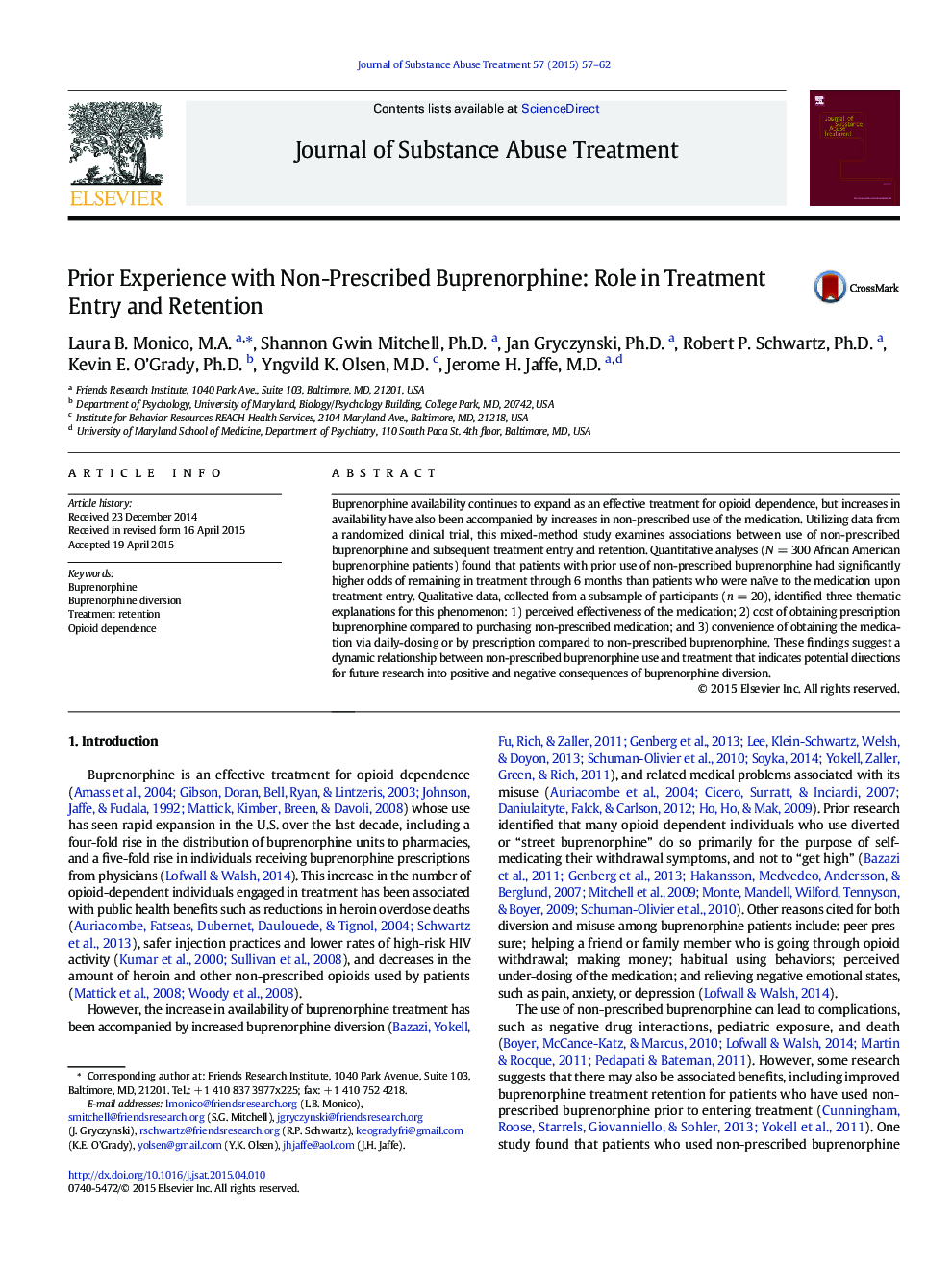| Article ID | Journal | Published Year | Pages | File Type |
|---|---|---|---|---|
| 6802471 | Journal of Substance Abuse Treatment | 2015 | 6 Pages |
Abstract
Buprenorphine availability continues to expand as an effective treatment for opioid dependence, but increases in availability have also been accompanied by increases in non-prescribed use of the medication. Utilizing data from a randomized clinical trial, this mixed-method study examines associations between use of non-prescribed buprenorphine and subsequent treatment entry and retention. Quantitative analyses (N = 300 African American buprenorphine patients) found that patients with prior use of non-prescribed buprenorphine had significantly higher odds of remaining in treatment through 6 months than patients who were naïve to the medication upon treatment entry. Qualitative data, collected from a subsample of participants (n = 20), identified three thematic explanations for this phenomenon: 1) perceived effectiveness of the medication; 2) cost of obtaining prescription buprenorphine compared to purchasing non-prescribed medication; and 3) convenience of obtaining the medication via daily-dosing or by prescription compared to non-prescribed buprenorphine. These findings suggest a dynamic relationship between non-prescribed buprenorphine use and treatment that indicates potential directions for future research into positive and negative consequences of buprenorphine diversion.
Related Topics
Life Sciences
Neuroscience
Biological Psychiatry
Authors
Laura B. M.A., Shannon Gwin Ph.D., Jan Ph.D., Robert P. Ph.D., Kevin E. Ph.D., Yngvild K. M.D., Jerome H. M.D.,
